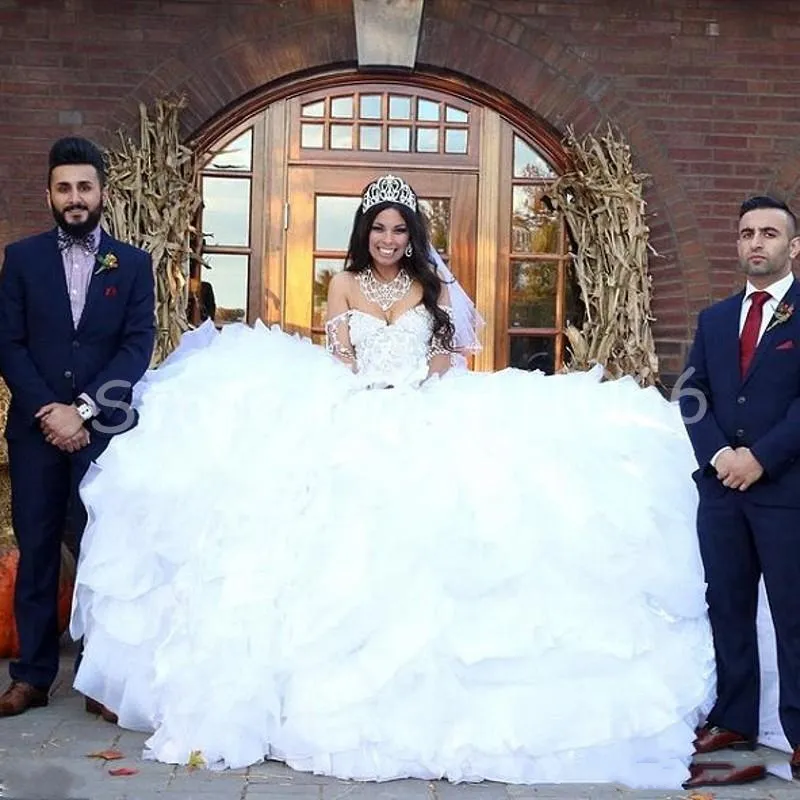Origins and Significance of the Gypsy Wedding Dress
The gypsy wedding dress holds deep cultural roots. It stems from the Romani’s rich traditions and nomadic lifestyle. Historically, these dresses reflected a family’s status within the community. They symbolized not only the bride’s beauty but also her family’s heritage and honor. The significance of the gypsy wedding dress goes beyond mere attire. It’s a visual celebration of life, love, and longevity.
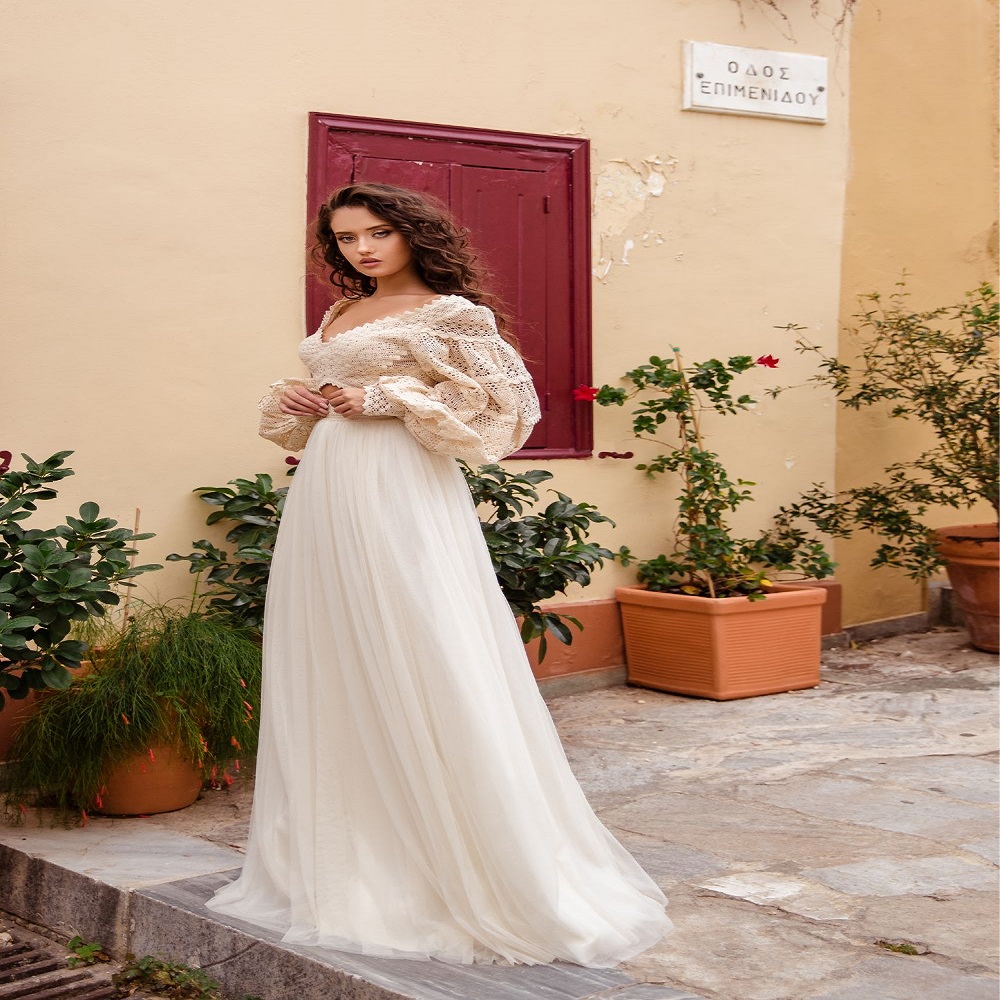 x
x
In the past, each element of the dress, from the fabric to the embellishments, had meaning. For example, specific colors and patterns could denote the bride’s region of origin or family lineage. The materials used often depended on the local resources available, making every gown unique. The attention to detail in these dresses illustrated the community’s craftsmanship.
The gypsy wedding dress is not just a garment; it’s a narrative. It tells the story of the bride’s journey, the history of her ancestors, and hopes for her married life. Such richness in tradition makes the gypsy wedding dress more than fashion. It is a cherished emblem, a living artwork meant to be passed down through generations.
Traditional Styles and Modern Interpretations
When it comes to gypsy wedding dresses, there is a fascinating blend of traditional styles and modern interpretations. Historically, these dresses bore the hallmark of classic gypsy aesthetics. That usually meant voluminous skirts, long sleeves, and liberal use of frills and ruffles. Traditional dresses often featured intricate lace and vibrant patterns that held cultural significance to the wearer’s community.
As times have changed, so has the gypsy wedding dress. Designers draw inspiration from these historical garments and reinterpret them for the modern bride. The essence of the traditional gypsy wedding dress still remains in today’s designs. However, these contemporary versions might include sleeker silhouettes, shorter hemlines, or fewer frills. They aim to blend the old-world charm with today’s fashion sensibilities.
Some modern gypsy wedding dresses may present subdued colors and lessened volume while still emphasizing the original spirit of the attire. They continue to capture attention with their unique qualities. Others may integrate modern fabrics and cutting-edge designs while maintaining iconic elements, such as corseted bodices and full skirts.
The adaptability of gypsy wedding dress design allows it to stay current with trends, yet distinct enough to stand out as homage to its roots. For brides looking to honor their heritage in a more contemporary way, modern interpretations of gypsy wedding dresses offer the perfect solution. These dresses create a beautiful convergence of history and modernity, allowing each bride to shine on her special day with a nod to tradition.
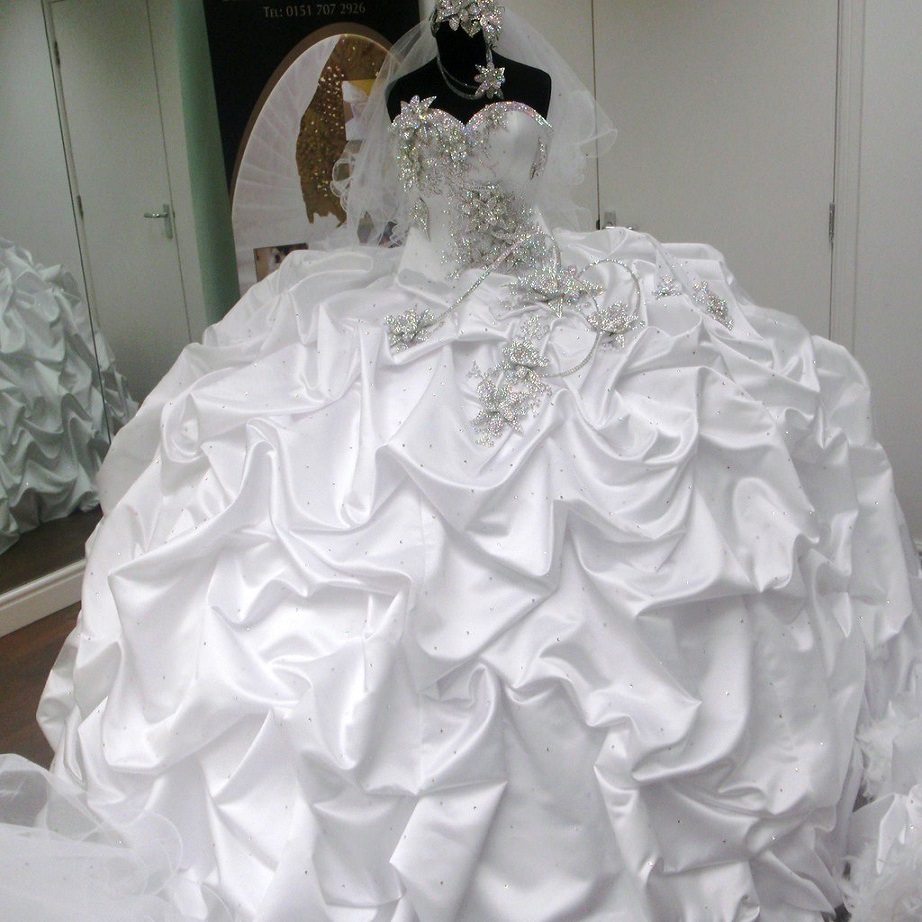 Key Features of Gypsy Wedding Dresses
Key Features of Gypsy Wedding Dresses
Key features define gypsy wedding dresses, setting them apart in the bridal fashion world. These features succeed in capturing the essence of gypsy heritage while catering to modern preferences. Understanding these elements helps in appreciating the beauty and uniqueness of each dress.
The first noticeable feature is the dress silhouette. Gypsy wedding dresses often favor voluminous skirts that create a dramatic impact. The skirts, characterized by layers of fabric, enhance movement and add a regal aspect to the bride’s appearance. They represent the traditional gypsy love for grandeur and celebration.
Long sleeves are another classic aspect. They range from sheer, delicate fabrics to richly embroidered ones, adding elegance and sometimes serving as a canvas for cultural storytelling through patterns.
The bodice is frequently corseted, drawing inspiration from historical designs. It not only defines the waist but also adds a vintage feel to the ensemble. A corseted bodice provides structure and supports the grand skirt, balancing the overall look.
Ruffles and frills often adorn these dresses, echoing the exuberance of gypsy festivities. While modern interpretations may tone down their use, they remain a nod to the playful spirit embodied in traditional attire.
Finally, the wedding dress is often multi-layered. This not only adds volume but also allows for a mixture of textures and fabrics, giving depth and complexity to the dress. Each layer can tell a different part of the bride’s story, making the dress as unique as its wearer.
These features, from the skirt to the sleeves and bodice, work together to create a gypsy wedding dress that’s both a tribute to tradition and a statement of individual style. Brides wearing these dresses carry with them a sense of history, as well as a personal touch of grace and splendor on their wedding day.
Color Palette and Fabric Selection
Choosing the right color palette and fabric is vital for a gypsy wedding dress. Traditional gypsy dresses often feature vibrant and bold colors. Deep reds, bright blues, and lush greens are common. They reflect the joyous spirit of gypsy culture. These colors are not just for beauty. They also carry cultural symbolism and family heritage.
Today, brides may opt for softer hues or even pastel shades. It’s a nod to modern sensibilities while keeping the dress’s cultural essence. White, too, has become a popular choice for those seeking a blend of tradition with contemporary bridal fashion.
Fabrics play a crucial role in the dress’s overall look and feel. Historically, gypsy wedding dresses made use of what was on hand. They often incorporated velvets, silks, and cotton. These fabrics were chosen for their durability, texture, and ability to hold vibrant dyes.
Modern gypsy wedding dresses may use these traditional fabrics. But they also include tulle, chiffon, and organza for lightness and movement. The selection of the fabric determines the dress’s flow and fit. It impacts how the bride moves and feels on her special day.
Comfort is as important as appearance. Thus, today’s dresses balance aesthetic appeal with wearability. High-quality fabrics that breathe and move with the bride are key. They contribute to the dress’s beauty and the bride’s ease on her wedding day.
Whether sticking to classic gypsy colors or exploring modern palette variations. Whether choosing historic fabrics or incorporating new ones. The conclusion is clear. The color and fabric of a gypsy wedding dress must resonate with the bride’s personal style and cultural significance.
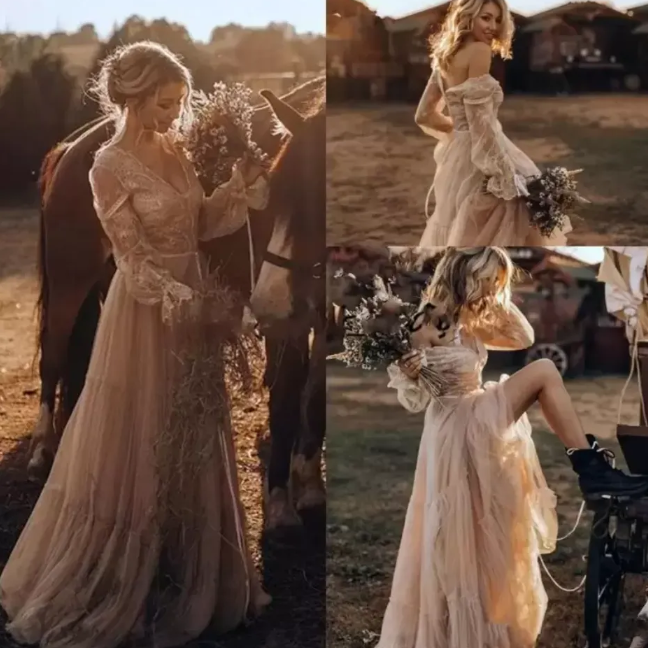 Ornate Detailing: Exploring Embellishments
Ornate Detailing: Exploring Embellishments
The embellishments on a gypsy wedding dress are not just details. They are the essence. These dresses feature ornate detailing, with each adding a layer of elegance and cultural storytelling. Let’s explore the types of embellishments that bring gypsy wedding dresses to life.
Beadwork and Sequins: Beading and sequins add sparkle and texture. Skilled artisans often hand-sew these elements, reflecting fine craftsmanship.
Embroidery: Intricate embroidery is common. It might depict floral patterns, or cultural motifs significant to the bride’s heritage.
Lace Accents: Lace gives a touch of romance and sophistication. From sleeves to hemlines, lace can be used subtly or as the main event.
Crystal and Stone Adornments: Crystals and stones give a deluxe feel. They catch the light and draw all eyes to the bride.
Metallic Threads: Woven into the fabric, metallic threads provide shimmer. They offer a regal look that glows with each movement.
Appliqués: Raised decorative designs, appliqués add depth. They often feature in key dress areas, like the bodice or train.
These embellishments form an integral part of the gypsy wedding dress charm. They honor tradition while allowing for personal expression. A bride may choose heavy embellishment for drama, or subtle touches for a softer look. Regardless, the craftsmanship behind these details is what makes each gypsy wedding dress a masterpiece.
 Accessories to Complement the Gypsy Wedding Ensemble
Accessories to Complement the Gypsy Wedding Ensemble
When styling a gypsy wedding dress, accessories play a vital role. They complete the look and tie all elements of the ensemble together. Here are some accessory options for the perfect gypsy bridal outfit:
Headpieces: Think ornate headbands, floral crowns, or even a traditional tiara. These pieces can echo the dress’s embellishments and add height to the bride’s look.
Jewelry: Bold statement necklaces, chandelier earrings, and intricately designed bracelets enhance the dress’s richness. Choose pieces that complement the dress’s colors and details.
Footwear: Comfortable yet stylish shoes are important. Brides often opt for embroidered or bejeweled sandals or heels that match the dress’s style.
Veils: A veil can be a stunning addition, especially if it features lace or similar detailing as the dress. Some brides might choose a veil with color accents to link back to traditional gypsy attire.
Belts or Sashes: To accentuate the waist or add a color pop, a decorative belt or sash can be a chic accessory choice. They can also incorporate similar beading or lace from the dress.
Capes or Shawls: For an additional layer of elegance and to maintain modesty during the ceremony, a cape or shawl with embroidery or lace can be a perfect choice. They offer both warmth and style.
Each accessory should speak to the dress’s aesthetic and the bride’s personal style. Thoughtfully chosen accessories can elevate the gypsy wedding dress experience, creating an unforgettable bridal look.
How to Choose the Perfect Gypsy Wedding Dress
Choosing the perfect gypsy wedding dress involves more than just picking a style. It’s about embracing tradition while showcasing your personality. Here’s a simple guide to help you find the dress that best fits your wedding vision.
Reflect on Tradition and Personal Style: Start by considering the traditional features of gypsy dresses. Look at silhouettes, embellishments, and colors that resonate with your heritage. Then, think about your personal style. Do you prefer a classic look or are you leaning towards a modern twist?
Consider the Ceremony and Venue: The location and theme of your wedding can influence your dress choice. An opulent dress fits a grand venue, while a simpler design may suit an outdoor ceremony.
Choose a Flattering Silhouette: Whether you go for a full skirt or a sleek design, make sure it flatters your body shape. A well-fitting dress will make you feel confident and beautiful.
Select the Right Color Palette: While traditional dresses may feature bright colors, you might opt for softer shades. The important thing is that the colors reflect your taste and the mood of your wedding.
Focus on Fabric and Comfort: Comfort is key on your wedding day. Choose breathable, high-quality fabrics that will allow you to move freely and enjoy your day.
Decide on the Level of Detail: Decide how much detailing you want. It can range from minimalistic beadwork to lavish embroidery and lace.
Set a Budget: Gypsy wedding dresses vary in price. Define your budget early on and seek dresses that offer the best value for your money.
Remember to start your search early, allowing ample time for custom fittings and alterations. By considering these factors, you can choose a gypsy wedding dress that stands out for its elegance and authenticity, while perfectly capturing your essence as a bride.
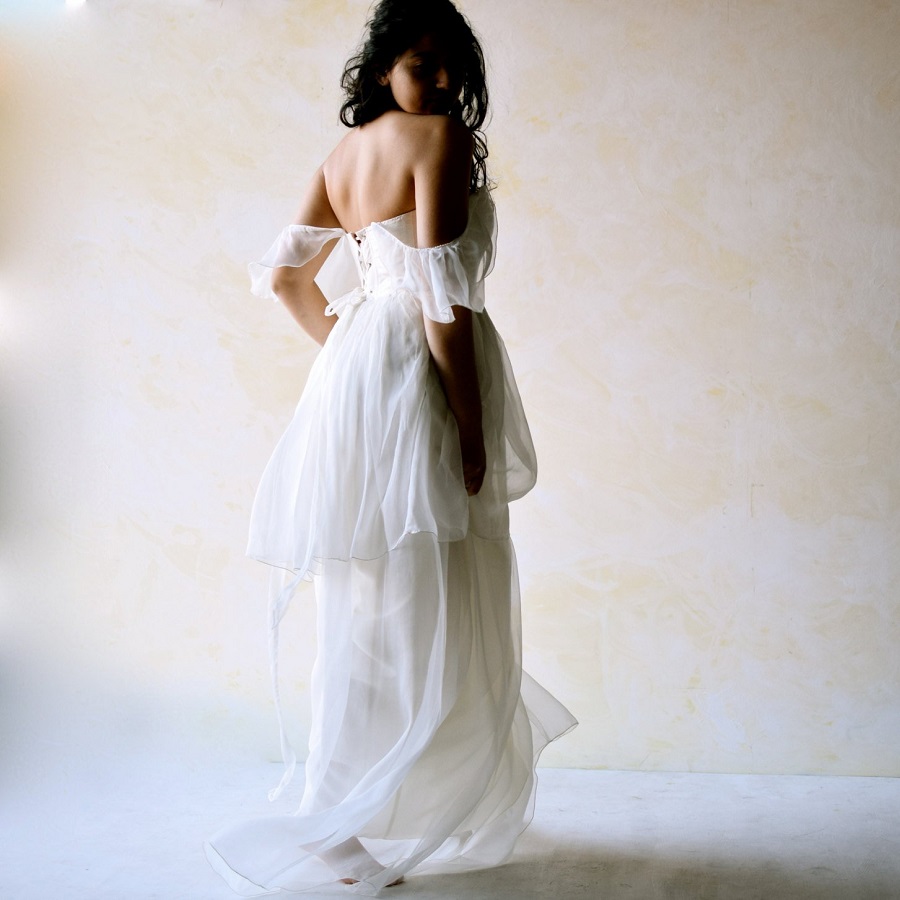 Customization Options for a Unique Bridal Look
Customization Options for a Unique Bridal Look
Creating a unique bridal look with a gypsy wedding dress involves customization. This process allows brides to infuse their individuality into their dress. Here are ways to customize your gypsy wedding dress for a truly one-of-a-kind appearance:
Choose Your Silhouette: Start with the basic shape of your dress. Consider a fitted bodice with a dramatic skirt or a streamlined A-line for a subtle nod to tradition.
Select Special Fabrics: Pick fabrics that speak to you. Combine traditional materials like silk with modern options like chiffon for depth.
Personalize the Color: Go beyond the usual palette. Mix classic hues with unexpected shades to reflect your personal style.
Add Unique Embellishments: Choose lace or beading that tells your story. Select patterns that hold meaning or hand-sewn details that stand out.
Incorporate Heirlooms: Attach family heirlooms to your attire. This could be a piece of vintage lace or a family jewel sewn into the dress.
Custom Fittings: Ensure a perfect fit with custom tailoring. Tailors can adjust every part of the dress to flatter your figure.
Design Your Train: Decide the length and style of your train. A long, embellished train adds drama, while a short one offers practicality.
Play with Necklines: Pick a neckline that complements your features. From sweetheart to high-neck, choose one that suits you best.
Modify Sleeve Length: Opt for long, flowing sleeves or a strapless design. Your choice of sleeves can transform the dress’s look.
By considering these customization options, you can create a gypsy wedding dress that’s not only steeped in culture but also a true representation of your unique taste and style.
